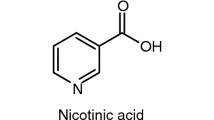Abstract
Vapor pressure is a fundamental property of a pure substance. This property is the pressure of a compound’s vapor in thermodynamic equilibrium with its condensed phase (solid or liquid). When phase equilibrium condition is met, phase coexistence of a pure substance involves a continuum interplay of vaporization or sublimation to gas and condensation back to their liquid or solid form, respectively. Thermogravimetric analysis (TGA) techniques are based on mass loss determination and are well suited for the study of such phenomena. In this work, it is shown that TGA method using a reference substance is a suitable technique for vapor pressure determination. This method is easy and fast because it involves a series of isothermal segments. In contrast to original Knudsen’s approach, where the use of high vacuum is mandatory, adopting the proposed method a given experimental setup is calibrated under ambient pressure conditions. The theoretical framework of this method is based on a generalization of Langmuir equation of free evaporation: The real strength of the proposed method is the ability to determine the vapor pressure independently of the molecular mass of the vapor. A demonstration of this method has been performed using the Clausius–Clapeyron equation of state to derive the working equation. This algorithm, however, is adaptive and admits the use of other equations of state. The results of a series of experiments with organic molecules indicate that the average difference of the measured and the literature vapor pressure amounts to about 5 %. Vapor pressure determined in this study spans from few mPa up to several kPa. Once the p versus T diagram is obtained, phase transition enthalpy can additionally be calculated from the data.







Similar content being viewed by others
References
D. Price, Thermochim. Acta 367, 253–262 (2001)
K. Chatterjee, D. Dollimore, K. Alexander, Thermochim. Acta 392, 107–117 (2002)
K. Hilpert, Structure and Bonding (Springer, Berlin, 1997)
S. Neuenfeld, J. Zerweck, Rueckblick GEFTA Jahrestagung (1999). http://www.gefta.org. Accessed 26 June 2017
NIST chemistry webbook. http://www.webbook.nist.gov. Accessed 27 June 2017
A. Bhattacharjee, A. Rooj, D. Roy, M. Roy, J. Exp. Phys. (2014). https://doi.org/10.1155/2014/513268
B. Grayson, L. Fosbraey, Pestic. Sci. 13, 269–278 (1982)
ASTM E2071, Standard practice for calculating heat of vaporization or sublimation from vapor pressure data
Acknowledgements
The authors are thankful to Dr. Dudley May for proofreading the manuscript and for useful discussions.
Author information
Authors and Affiliations
Corresponding author
Rights and permissions
About this article
Cite this article
Giani, S., Riesen, R. & Schawe, J.E.K. An Indirect Method for Vapor Pressure and Phase Change Enthalpy Determination by Thermogravimetry. Int J Thermophys 39, 84 (2018). https://doi.org/10.1007/s10765-018-2407-y
Received:
Accepted:
Published:
DOI: https://doi.org/10.1007/s10765-018-2407-y




